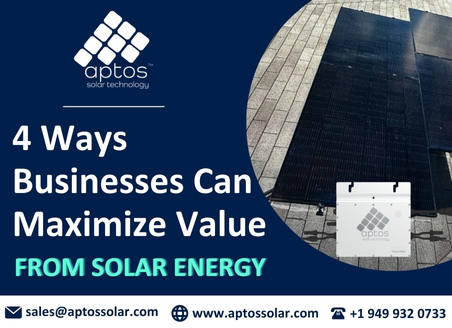Unleashing Solar Potential: The DNA Split Cell Series by Aptos Solar Technology

In an age where renewable energy is reshaping our world, solar panels are more than just power generators—they’re a commitment to sustainability, innovation, and aesthetics. At Aptos Solar Technology, we’ve spent 30 years redefining solar solutions in the USA, bringing advanced products to homes and businesses. Among our standout offerings, the DNA Split Cell Series solar panels embody cutting-edge technology and refined design, ensuring continuous energy generation and unrivalled performance.
Why the DNA Split Cell Series Stands Out
The DNA Split Cell Series is not just another solar panel—it’s a revolution. Designed to maintain power efficiency even under challenging conditions, these panels outperform traditional modules, ensuring that your investment yields the energy savings and environmental benefits you expect.
Here’s why the DNA Split Cell Series is a game-changer:
Advanced Technology for Optimal Performance
Harnessing the sun’s energy efficiently requires more than just standard solar cells. The DNA Split Cell Series employs innovative technologies that set it apart from the competition.
- Selective Emitter PERC Technology: By incorporating Passivated Emitter and Rear Contact (PERC) technology, our panels maximize light absorption, improving energy generation even in low-light conditions.
- Thin-Film Layers for Heat Tolerance: Extreme heat can reduce a solar panel’s efficiency, but our panels are engineered to tolerate high temperatures, ensuring reliable performance in every season.
- Increased Active Area: With a 5% larger active area, our DNA Split Cell panels capture more sunlight, maximizing energy harvest and delivering higher power output.
Patented DNA Technology
At the heart of the DNA Split Cell Series lies Aptos Solar Technology’s patented DNA design. This unique approach incorporates a host of technical enhancements:
- 10 Ultra-Thin Busbars: These busbars allow for reduced resistance and improved electron flow, leading to greater energy capture.
- Minimized Resistive Loss: By streamlining electron movement, these panels reduce energy waste, increasing overall efficiency.
- Enhanced Module Efficiency: Every element of our DNA technology is designed to work together, ensuring that our panels generate more power per square foot than standard models.
Aesthetic Excellence
Solar panels don’t just serve a functional purpose—they’re part of your home or business’s aesthetic. The DNA Split Cell Series is designed with beauty and elegance in mind.
- All-Black Design: Our panels feature a sleek all-black finish that blends seamlessly into rooftops, creating a sophisticated and modern appearance.
- Enhanced Split Cell Technology: Combining functionality with form, the split-cell design not only improves performance but also enhances the panel’s visual appeal.
The Sustainability Advantage
Investing in solar isn’t just about saving on energy costs—it’s about contributing to a greener planet. The DNA Split Cell Series reflects our commitment to sustainability by:
- Reducing Carbon Footprint: High-efficiency panels generate more power with fewer resources, making your solar investment environmentally impactful.
- Durable Construction: With advanced materials and design, our panels are built to last, reducing waste and ensuring long-term performance.
Comparing the DNA Split Cell Series with Competitors
When stacked against traditional panels, the DNA Split Cell Series consistently comes out ahead. While many panels struggle with heat dissipation, and resistive loss, ours excel thanks to:
- Superior Heat Tolerance: Unlike standard panels, which can lose efficiency in hot conditions, our DNA technology ensures optimal energy output.
- Greater Energy Yield: The additional 5% active area and advanced busbar design deliver measurable gains in energy production.
- Reliability in All Conditions: With half-cut cell technology, our panels continue generating power even when partially obstructed.
Why Choose Aptos Solar Technology?
At Aptos Solar Technology, we don’t just supply solar panels—we deliver solutions. With three decades of industry experience, we’re proud to provide products that combine innovation, aesthetics, and value. The DNA Split Cell Series represents our dedication to pushing the boundaries of solar technology, offering customers:
- Long-Term Reliability: Backed by our 30-year product and performance warranty, these panels provide peace of mind and dependable power for decades.
- Cost-Effectiveness: Our commitment to advanced manufacturing techniques ensures that these premium panels remain accessible without compromising on quality.
Conclusion
The DNA Split Cell Series is more than just a solar panel—it’s a testament to what modern solar technology can achieve. Combining unparalleled efficiency, innovative design, and lasting durability, these panels are an investment in a brighter, greener future.
Choose Aptos Solar Technology and take a step toward sustainable energy today. With the DNA Split Cell Series, the power of the sun is truly within your reach.
Contact us today to learn more about how Aptos Solar Technology can transform your energy needs with cutting-edge solutions.









